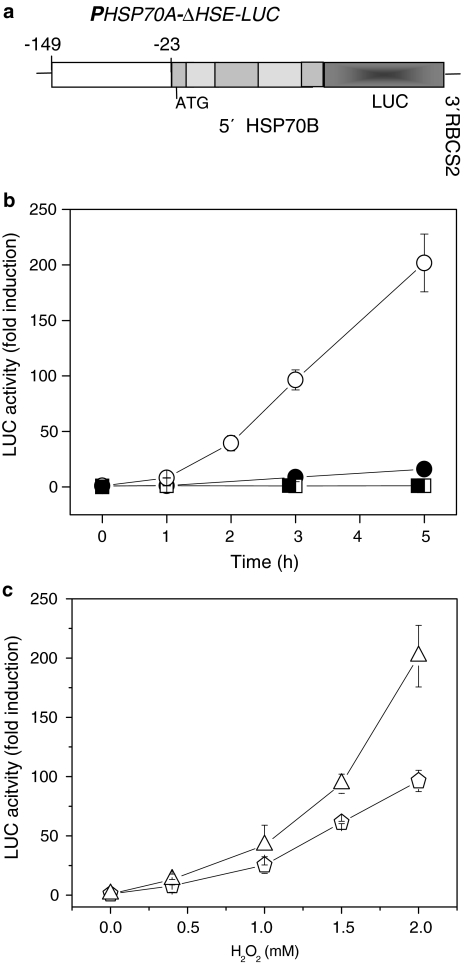Fig. 1.
a–c Response of a PHSP70A-Luc reporter gene in Chlamydomonas transformants to the addition of H2O2 in the light and in the dark. a A truncated version (ΔHSE) of the HSP70A promoter construct known to be inducible by H2O2 (Shao et al. 2007) was fused to a luciferase reporter gene that at its upstream end harbored sequences of HSP70B. Dark shaded bars represent exons, light shaded bars indicate introns. The third exon of HSP70B was fused to a Renilla luciferase reporter gene with C. reinhardtii adapted codon usage (Fuhrmann et al. 2004) (LUC), indicated by a dark grey bar. The 3′ UTR of the fusion gene is encoded by the corresponding region of RBCS2. b Induction of PHSP70A-LUC in Chlamydomonas transformants by exogenously applied hydrogen peroxide. Light grown C. reinhardtii cells were incubated in the presence of 2 mM H2O2 with white light of an intensity of 70 μmol photons m−2 s−1 (open circles) or in the dark (closed circles). H2O was added to light-incubated control cultures (open squares) and to control cultures transferred to the dark (closed squares). Samples for luciferase assays were taken at the time points indicated and processed as described in Sect. “Materials and methods”. The activity was normalized with respect to cell numbers and the induction factors were calculated by comparison with untreated cells at time point 0 h. c Dependence of the degree of induction of the PHSP70A-LUC reporter construct in Chlamydomonas transformants in the light on the concentration of exogenous H2O2. Experiments were performed as described in b. Samples for luciferase assays were taken after incubation for 3 h (diamonds) and after 5 h (triangles)

